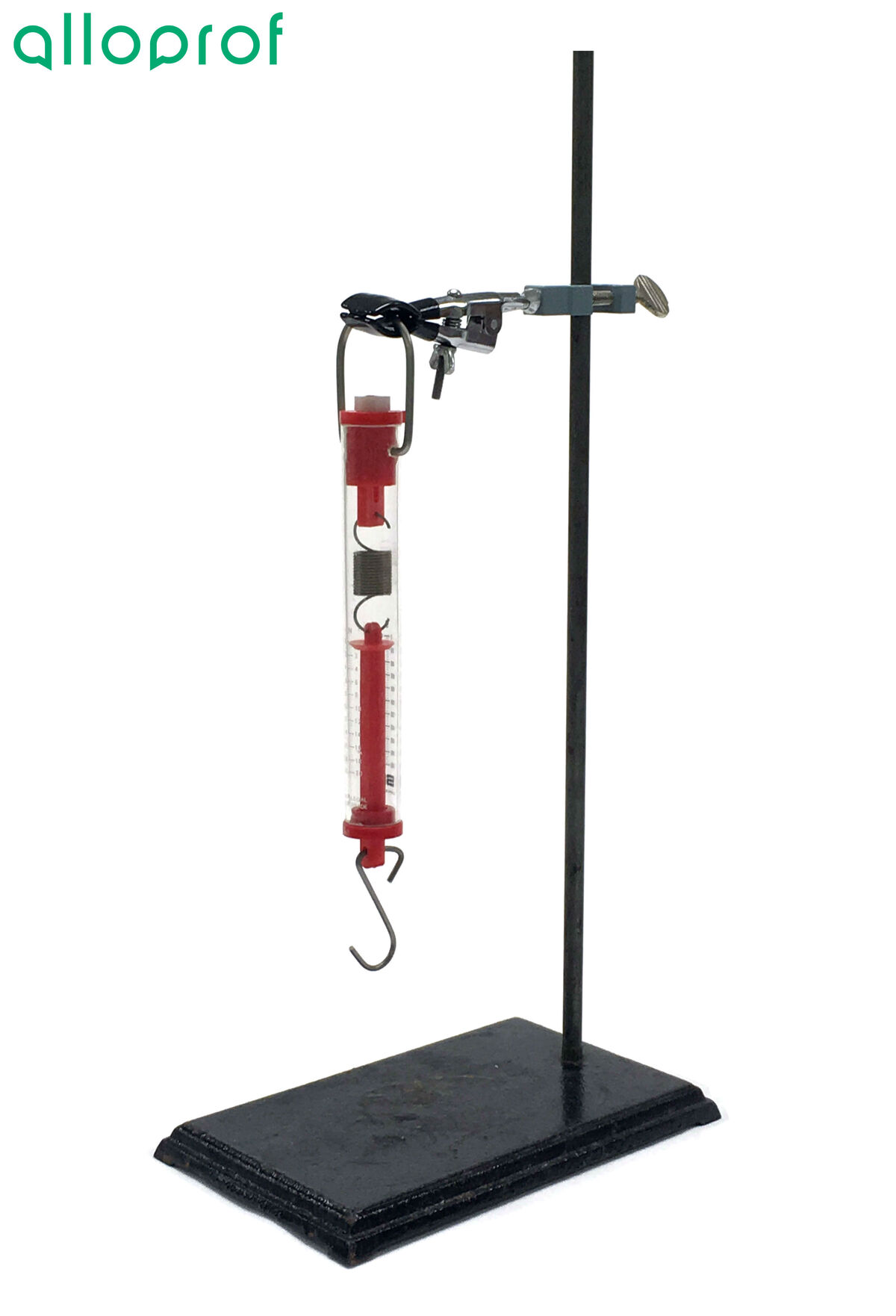This concept sheet explains the procedure to follow when using a dynamometer.
A dynamometer is an instrument that measures force. The dynamometer consists of a spring and a scale calibrated in Newtons |\text {(N)}|.
- Object of undetermined weight (or set of masses)
- Universal support
- Clamp
- Dynamometer

1. Install the clamp on the universal support, and anchor the dynamometer to the clamp.

2. Check that the dynamometer is correctly calibrated: when no object is hooked to the spring, the cursor should be placed at the zero of the measurement scale.

3. Hang the object (for which the force is to be measured) onto the hook of the dynamometer.

4. Read the force on the dynamometer.

5. Put away the equipment.
The force measured by the dynamometer represents the gravitational force, which is the force of attraction existing between the hanging object and the Earth. Once this force is known, it is possible to find out the mass of the object if it is unknown, before performing the experiment.
||F_{g} = m \times g||
where
|F_{g}| represents the gravitational force in Newtons |(\text {N})|
|m| represents the mass of the body in kilograms |(\text {kg})|
|g| represents the intensity of the gravitational field in Newtons per kilogram |(\text {N/kg})|
What is the mass of an object that exerts a force of |\small 6.0 \: \text {N}| ?
The first step consists in identifying the variables in this context.
||\begin{align}F_{g} &= 6.0\: \text{N} \\
g &= 9.8 \: \text{N/kg} \\ m &= \: x \end{align}||
Since there is only one unknown variable, it can be determined mathematically.
||\begin{align} F_g = m \times g \quad \Rightarrow \quad m &=\displaystyle\frac{F_g}{g}
\\ \\
&= \displaystyle\frac{6.0\: \text{N}}{9.8\: \text{N/kg}}\\ \\
&= 0.61 \:\text{kg}\end{align}||
The mass is therefore |0.61 \:\text{kg}|.